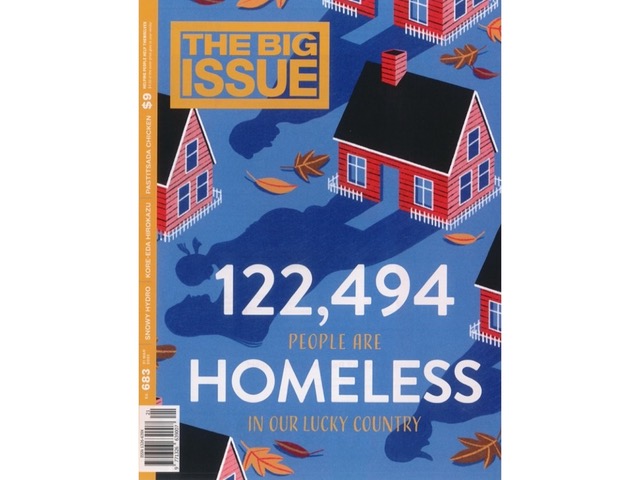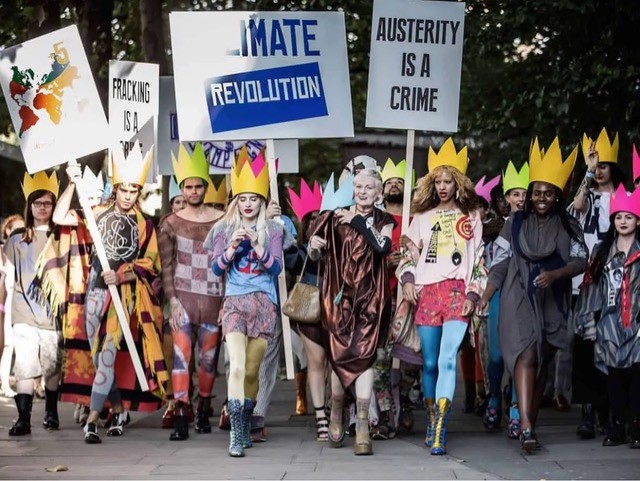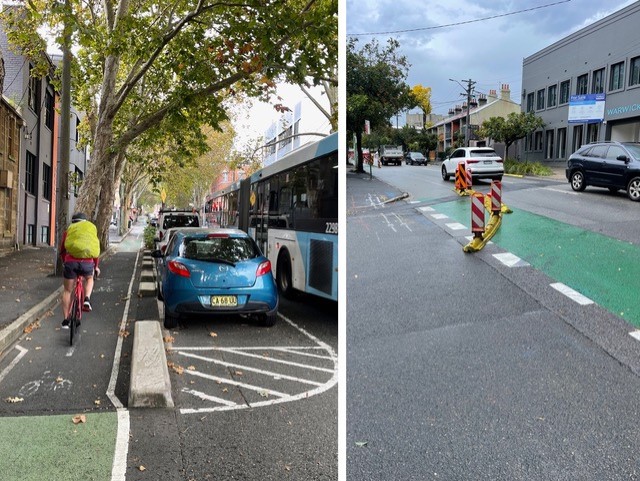
The Big Issue: Homelessness
The Federal Government’s housing policy is the failure du jour. In a recent piece on public housing in the SMH, your correspondent called the HAFF (Housing Australia Future Fund), “a defective magic pudding with an inexperienced minister (Julie Collins) in charge of it”.
Most notably, over 80 BTL (below the line) comments savaged the Albanese government (as he likes to style it) in the way in which the federal government had abandoned public housing and homelessness issues.
Speaking of which, the front page of the Big Issue notes that 122,494 people are homeless in Australia. For those unfamiliar, the Big Issue was an initiative founded by John Bird and Gordon Roddick (husband of The Body Shop entrepreneur Anita Roddick) just over 30 years ago in England to provide a means for homeless people to gain an income by selling a commercially produced magazine.
50% proceeds to the homeless, 50% to the producers.
Smaller street newspapers, such Making Change in Santa Monica USA, criticised its professionalism, and its sidelining of the homeless issue. Which takes the 683rd Australian issue full circle when you buy a magazine dealing with homelessness, from a homeless person. Shameful that a market-based commodity is needed to provide income for the homeless.

Vivienne Westwood - eco-fake
Among the recent laudatory obituaries for Vivienne Westwood, queen of punk, was the omission that, despite her protestations, her work and philosophy, were deeply unsustainable. In creating the look of London’s punk movement in the 70s she abhorred the hippies, and all they stood for, including their environmental concerns. Later she embraced the idea of political action for sustainability, but sadly, it appears to have been a sham.
Whilst she protested vehemently against petroleum-based materials, her runway shows featured outfits based on plastics, ignoring her own mantra “to cutout plastic wherever possible”. And the outfits proliferated, testing the idea of “quality over quantity” that she regularly advocated. Fashion is the world's second largest business after agriculture, and a major user of extractive industries.
In an article entitled Why Vivienne Westwood is not Eco Friendly in Eluxe magazine in 2018 she was heavily criticised for being at the center of an industry causing great climate harm, and using her fliers as cover for ignoring, or ignorance of, the damage that her business was doing, and summarily dismissed her: “we believe Westwood is misleading society into believing that her brand is ethical and eco-friendly when it is anything but”.
Part of her reputation rested on a documentary by British director Lorna Tucker called Westwood - Punk, Icon, Activist, although Westwood herself was critical that the film didn't emphasise her activism enough. Last word goes to Johnny Rotten, who called Westwood and her erstwhile partner Malcolm McLaren (the Sex Pistols’ manager) “a pair of shysters, they would sell anything to any trend that they could grab onto”.

A mini electric revolution
Last week’s Thing about ICE cars being hacked into EVs elicited a couple of comments about the featured company that converts Land Rovers. Unfortunately, I omitted to include the links to Fellton, the joint venture of Jaunt and Zero EV. There, fixed.
I have some knowledge of how significant this trend is. I have EV-hacked a few cars in my spare time over the last 15 years, including a couple of minis. These two images, going and coming, are of my most recent E MINI, much modified, but still small, nimble and intimidated by the city traffic of today’s SUV and pick-ups.

Snafu Cycling in Sydney
NIMBYs and NOTEs want to rip up dedicated cycling paths according to several articles this week. Cycling now seems to bring forth animosity on all sides. Whilst we admire the genteel cyclists in the Netherlands and Denmark, as they trundle around town with their swepped-backed handlebars and slow speeds, we are not of that making.
In contrast, our cities are home to both MAMILs (middle-aged men in Lyra) and DREBs (delivery riders on electric bikes), all traveling far too fast, particularly in the narrow streets of Sydney. Increasing the animosity is the poor design of new cycleways built in those tight streets.
The City of Sydney, designer of much of the new network, prides itself on design excellence for all development applications. (Aside: it often requires so much extra that affordable housing becomes unaffordable).
However, no such attention to good design has been paid to the cycleways. Above are two examples: the bike lane outside our studio features huge curbs, dangerous for both drivers and riders, like those being ripped up at a cost $17,000 by Canada Bay Council. Dangerously narrowing a street that has very large buses, they puncture tyres and cause serious accidents for bike riders as they crash into these unnecessarily oversized obstacles.
On the right is Bridge Rd in Glebe, outside my house, where temporary barriers were erected during Covid to create a cycleway. So temporary indeed, they wash away in a flood, blocking the very lane they're meant to define. When it comes to cycleways, it seems the City of Sydney is more design excrement than design excellence.

Bookends: Thermal performance
Bookends this week features two books dealing with the oft-dry topic of thermal comfort. First up is Thermal Comfort, by the delightfully named Piers Olaf Fanger. In extensive scientific research, he measured conductive, convective and radiant heat, and analysed how it affected people’s feeling of thermal comfort, along the way inventing an index for clothing’s thermal standards.
His most remarkable insight was that radiant energy, from the temperature of surfaces around us, has more influence on comfort than convective heating. In other words, he validated traditional thermal mass in “building conditioning” in preference to air borne 20th Century “air conditioning”.
Such scientific concerns, with long differential calculus equations, are nowhere in Lisa Heschong’s book, Thermal Delight in Architecture. A beautiful short read on experiential architecture, taking in warmth, coolth, breezes, and being in touch with the natural environment.
She takes the arcane aspects of thermal comfort, delivered by Fanger, and transforms them into poetic ideas that could equally have sprung from the pages of Gaston Bachelard. Both worth a read.
More things next week. Tone Wheeler is an architect / the views expressed are his / contact at [email protected].

